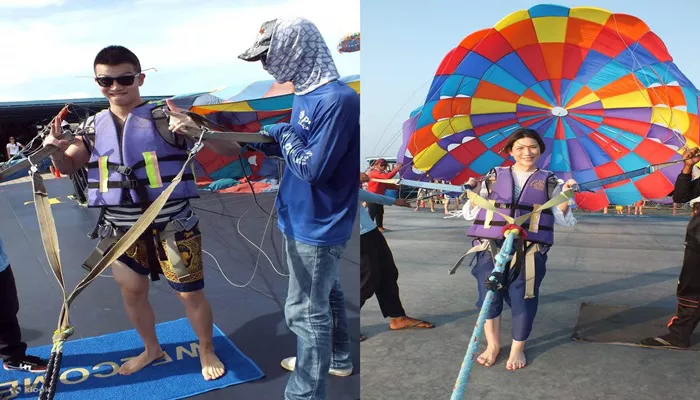Paragliding is an exhilarating sport that allows enthusiasts to soar through the skies and experience the beauty of nature from a unique perspective. However, to ensure a safe and enjoyable flight, it is crucial to have the right equipment. This article outlines the essential items you need to bring when paragliding, providing detailed descriptions to help both beginners and experienced pilots prepare effectively.
Understanding Paragliding Equipment
Before diving into the specific items you should bring, it’s important to understand the basic components of paragliding equipment. The main elements include:
Paraglider (Wing): The sail that provides lift and allows you to fly.
Harness: The seat that connects you to the wing and keeps you secure.
Lines: The ropes that connect the harness to the wing, essential for control.
Safety Equipment: Items like helmets and reserve parachutes that ensure your safety during flight.
Essential Items to Bring
When preparing for a paragliding adventure, consider packing the following essential items:
1. Paraglider Wing
The paraglider wing is your primary flying apparatus. It is made from lightweight, durable materials such as ripstop nylon. Ensure your wing is in good condition, free from tears or damage. Before each flight, perform a thorough inspection of the wing, checking for any signs of wear.
2. Harness
The harness is your seat in the sky. It should be comfortable and well-fitted. Look for a harness that includes features like:
Safety Features: Integrated back protection and attachment points for safety gear.
Storage Compartments: Spaces for carrying essential items like your emergency parachute.
3. Reserve Parachute
A reserve parachute is crucial for safety. In case of a malfunction with your main wing, deploying a reserve parachute can save your life. Make sure it is packed correctly and easily accessible.
4. Helmet
A helmet is non-negotiable when paragliding. Choose a lightweight model designed for aerial sports that meets safety standards. It should fit snugly but comfortably on your head.
5. Gloves
Wearing gloves protects your hands from cold temperatures and provides better grip on the lines during flight. Opt for gloves that are flexible enough to allow full control while offering warmth.
6. Appropriate Footwear
Your choice of footwear can significantly impact your takeoff and landing experience. Select boots that provide good ankle support and have non-slip soles for traction on various surfaces.
7. Communication Radio
A radio allows you to communicate with instructors or fellow pilots during flight. This is particularly important for beginners who may need guidance or assistance.
8. Variometer
A variometer measures your rate of ascent or descent, helping you understand air currents and optimize your flying technique. This device can enhance your overall flying experience by allowing you to find thermals more effectively.
9. GPS Device
Using a GPS device can aid in navigation during cross-country flights or unfamiliar areas. It helps track your route and ensures you can find your way back safely.
10. Paragliding Goggles
Protecting your eyes from wind, dust, and UV rays is vital while flying at high altitudes. Invest in quality goggles designed specifically for paragliding.
Additional Accessories
In addition to the essential items listed above, consider bringing these accessories for added safety and convenience:
Paraglider Line Cutter: A tool used to cut tangled lines in emergencies.
Camelbak or Hydration Pack: Staying hydrated during long flights is important.
First Aid Kit: A basic first aid kit can be invaluable in case of minor injuries.
Sun Protection: Sunscreen and lip balm with SPF will protect against sunburn during long flights.
Preparing Your Gear for Flight
Proper preparation of your gear before each flight is crucial:
Inspect All Equipment: Check your wing, harness, lines, and safety gear thoroughly before each flight.
Pack Your Wing Properly: Follow best practices for packing your paraglider to avoid damage.
Ensure Easy Access to Safety Gear: Your reserve parachute should be easily accessible in case of emergencies.
Practice Setup: Familiarize yourself with setting up your equipment quickly and efficiently.
Conclusion
Paragliding offers an incredible opportunity to connect with nature while experiencing the thrill of flight. By bringing the right equipment and accessories, you can ensure a safe and enjoyable adventure in the skies.
Always prioritize safety by using quality gear, staying informed about best practices, and maintaining open communication with other pilots or instructors during your flights. With this comprehensive guide on what to bring when paragliding, you are now better prepared to embark on this exciting journey into the air!
Related topics:
- How to Pick A Paraglider: Beginner’s Guide
- Can You Paraglide Without Training?
- What is Acro Paragliding?


